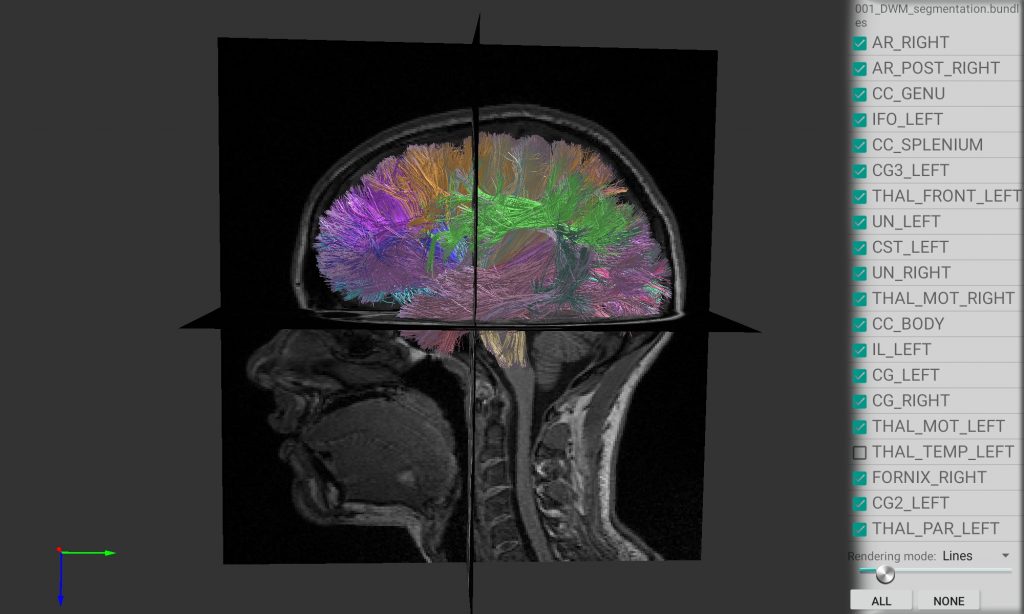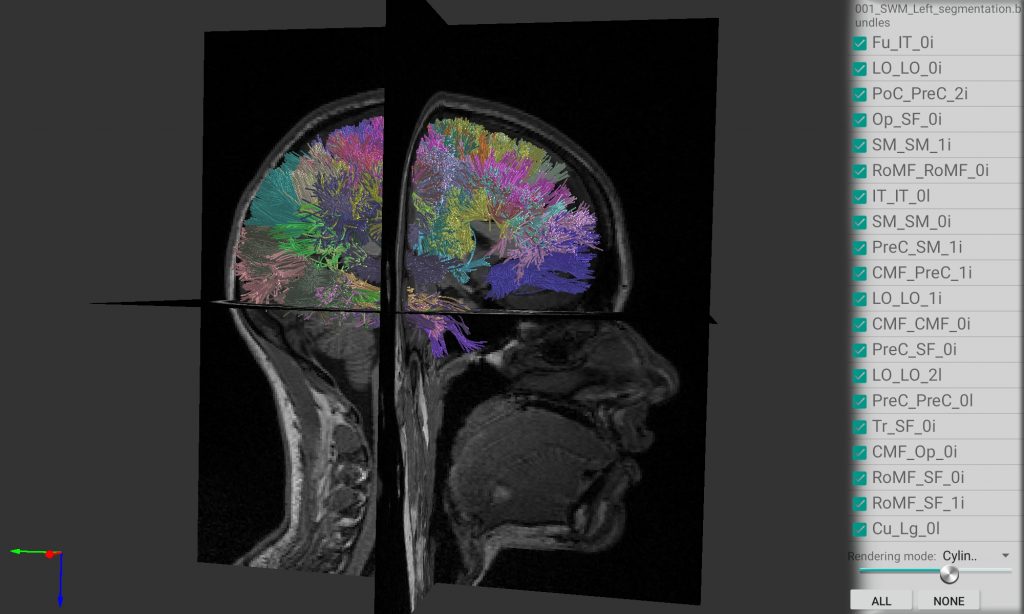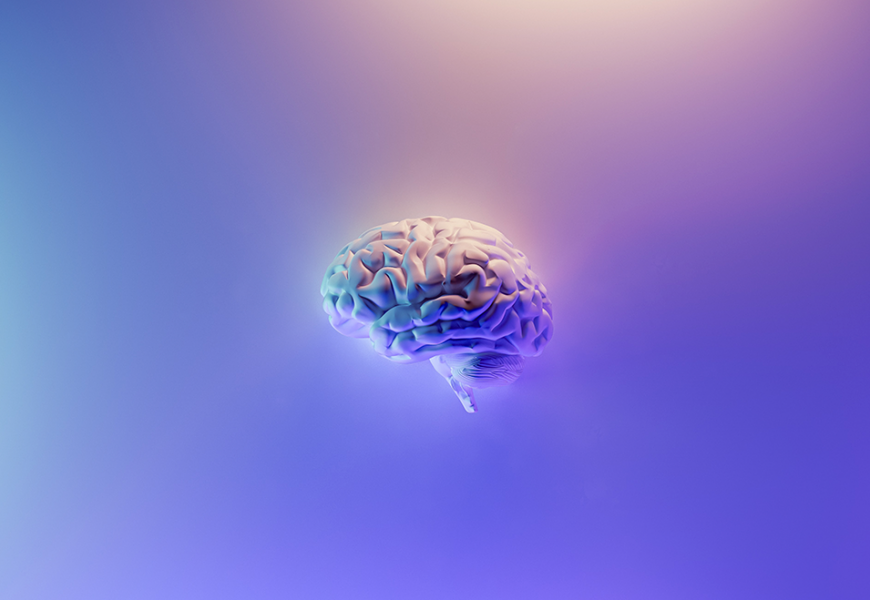By Carolina Vega / cvegaa@udec.cl
/ Photographies: Courtesy of FI UdeC
Map to mental health
Patience is one of the virtues that Pamela Guevara Alvez, an electronic civil engineer specialized in medical imaging and Ph.D. in Physics from the Université Paris-Sud, France, has had to cultivate throughout her academic years. It is just that analyzing brain fibers and their connections have led her to lead a particular area of Engineering, contributing directly to the development of brain maps which helps detect diseases, investigation that makes her to stand out as the only engineer in Chile developing this type of studies.
Pamela, born in Concepción, is part of the Department of Electrical Engineering, where she works as an associate professor, especially in the Biomedical Civil Engineering degree.
What is a brain map and why its construction is important?
Brain maps are atlases of fiber fascicles that represent the main connections of the white matter of the brain. They are important because through them the brain connections described in the atlases can be identified in different people, and connectivity studies can be carried out in order to evaluate the differences among populations, for example, between healthy people and patients with some neurological pathology.

Deep white (long)


How is a brain map generated?
A good quality diffusion magnetic resonance imaging database is required. Then, the cerebral fibers of the whole brain are calculated for each person, through a tractography algorithm (which allows visualizing the neural tracts). Subsequently, these are processed and analyzed in a common space, to identify the connections present in most of the analyzed database people.
Every day new studies are carried out; this which allows us to delve a little deeper into these aspects, in particular, cognitive functions. “Among them, there is a very interesting Neurospin collaborators study, where they use some of the methods developed to better understand the relationship between the disruption of access to consciousness in patients with psychosis and the alteration of structural brain connectivity. An altered connectivity is shown, especially in long connections, which supports the Global Neural Workspace (GNW) theory, which indicates that consciousness depends on long-distance brain connectivity”, says the UdeC researcher.
Thus, and given the development of the area, Pamela Guevara created the Medical Image Analysis Group, in which she carries out her research activity together with undergraduate and postgraduate students and colleagues from the Faculty of Engineering, in particular the academic from the Department of Computer Engineering, Cecilia Hernández.
Through several projects, tools for the study and analysis of brain connectivity have been developed, by using data from cerebral tractography from Diffusion Magnetic Resonance Imaging (dMRI), a technique that measures the movement of water in the brain and which allows the reconstruction of brain fibers, basis of the project “Methods for tractography-based parcellation of the cortical surface”, which has also been covered by other FONDECYT projects, in collaboration with the Neurospin research laboratory in France.
Pamela Guevara seeks, through her analysis, to contribute to the early diagnosis of different psychiatric disorders, such as schizophrenia, bipolar disorder or autism spectrum disorder. Although this type of tools is still being tested, it is sought in the future that they be integrated as an element to consider when making medical diagnoses.
For more information contact: pamela.guevara@biomedica.udec.cl
Last modified: 2 de junio de 2023






